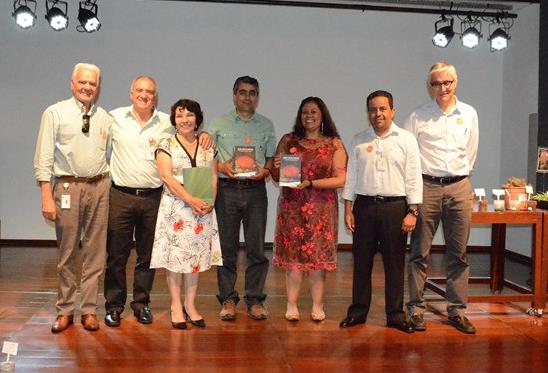Vale and Vale Institute of Technology (ITV) have just released the Guide of Plants aimed at the recovery of canga areas mined or impacted by other human activities. Canga is a very common environment in areas where there are large deposits of iron, as the Iron Quadrangle, an area that occupies about 7 thousand square kilometers, located largely in the Central region of Minas Gerais.
The event took place at the Memorial Vale, in Minas Gerais, and was attended by employees, ITV’s researchers, representatives of universities and of the State Government.

For the production of the guide, Vale’s Environment manager, Gleuza Jesué, explained that more than 1.2 thousand species were analyzed to determine which species would be indicated for use in the recovery of impacted areas. For this, some criteria were defined, among them, if their names are in the List of Endangered Species, of the Ministry of Environment, if they produce many seeds, if they have vigorous growth, if they are colonizers of outdoor areas (clearings) and if they are used by the population as an ornamental, medicinal or food species, among other characteristics.
“With this project, we are demystifying that only exotic species in areas of recovery are used. This work is mainly for society. It can be used by any company, any community, in any area. It is a product for the state of Minas Gerais”, said Gleuza. Overall, 75 species from different families were chosen. There are cacti, grasses, Vellozia squamata (canela-de-ema), bromeliads and orchids, they are all of ground or small vegetation origins and have characteristics of the canga ferruginous flora. Each species is identified with photos, drawings of herbarium specimens (leaves, flowers etc.), morphological and reproductive characteristics, geographical distribution, if it is an endangered species, and its importance for the recovery of degraded areas. One of the authors of the guide, ITV researcher Antônio Furtini emphasizes that this work was the result of a year and a half of study and fieldwork, carried out by a multidisciplinary team, and that it should be appropriate for all professionals involved in the recovery of the ecosystem functionality that has been modified or rebuilt.
“Mining companies which will continue to exist in the future are those with sustainability in their DNA. Understanding botany, performing basic and fundamental research, producing knowledge on this subject is an aspect as important as performing the mining or processing in the best global standard”, explained Luiz Mello, Chief Executive Officer of the Vale Institute of Technology.
Canga of the Carajás’ Flora
During the event, the researcher of the Vale Institute of Technology in Belém, Ana Giulietti, presented the first volume of the Catalog about the Flora of the cangas of Serra de Carajás. The work was developed by 74 researchers from 22 Brazilian and international institutions and was published in Revista Rodriguésia, one of the most important botanical journals in the country. This first volume, of the three volumes to be published, is comprised of 55 monographs of botanical families, including 139 genera and 248 species treated.
Printed volumes of the Guide will be sent to universities and research centers that work in the environmental area, as well as to public authorities. These guides will also be available on Vale’s website.

